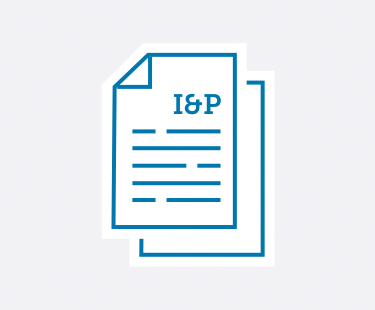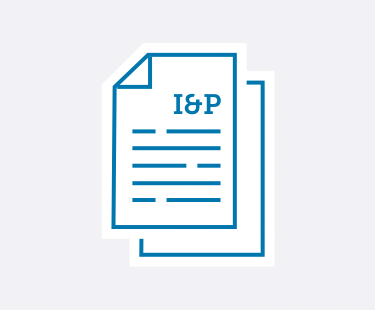

Learn practical strategies to handle emerging trends and leadership challenges in private schools.
No matter if you’re a School Head, Admission Director, Development Director, Board member, or any other private school administrator—Ideas & Perspectives®, ISM’s premier private school publication, has strategic solutions for the pervasive problems you face.
- Tuition not keeping pace with your expenses? In I&P, explore how to use strategic financial planning to create your budget and appropriately adjust your tuition.
- Enrollment dropping off? Discover how to implement the right admission and enrollment management strategies that engage your community—and fill your classrooms.
- Trouble retaining teachers? Learn how you can best support your teachers using ISM’s Comprehensive Faculty Development framework. Your faculty members will become more enthusiastic about their roles—which ultimately improves student outcomes.
- Fundraising campaigns not as successful as you’d hoped? Implement ISM’s practical advice and guidance to build a thriving annual fund, construct an effective capital campaign, and secure major donors—no matter your community size or location.
- Not sure how to provide professional development—for you and your staff? Learn ways to develop and fund a successful professional development strategy. You can improve teacher-centered satisfaction and growth, which in turn strengthens student-centered learning.
- Problematic schedule? You can master the challenges of scheduling with the help of ISM’s practical advice, based on our experience with hundreds of schools and our time-tested theories.
- And so much more.
I&P has shared targeted research, up-to-date insight, and sound theory with school leaders since 1975. More than 8,500 private school decision-makers find the answers to their schools’ administrative and governance matters in our advisory letter. We give you the strategic answers you need.
As an ISM Silver or Gold member, you not only receive issues online and in print 10 times a year, but you have access to 900+ articles in our web archive. Need help? It’s at your fingertips! Learn more and sign up for ISM's membership here.
Search
See the articles from our latest issue of Ideas & Perspectives.
Why Character Education Matters: Competing in the Marketplace
Volume 32 No. 9 // July 21, 2007
There is currently a heightened awareness of character education. In terms of academics, ISM has been tracking and warning of the competitive pressures from public schools throughout the United States. From Advanced Placement course offerings, to International Baccalaureate programs, to next level success, many public schools demonstrate that they are competitive with private-independent schools, admittedly with great regional variance. So while our schools can and do continue to compete in the area of academic excellence, Boards and School Heads must take more seriously than ever before the new competitive frontier — character education.Portrait of the Graduate, and the Characteristics of Professional Excellence of your faculty) and ensure they are directly connected to the lives of the students in your school.
1. Already a member? Click here to login.
2. Not a member? Click here to become a member.
3. Not sure? We'll help you figure it out.
Privacy Concerns and Short Term Disability Leave
Volume 32 No. 9 // July 21, 2007
When a school employee comes to the School Head with an involved medical condition and asks for six weeks off, the school’s sick leave policy should require documentation from the employee’s physician. But how much private information do you want to know? Can too much information be a liability?
1. Already a member? Click here to login.
2. Not a member? Click here to become a member.
3. Not sure? We'll help you figure it out.
The Board's Proper Role in Ensuring Programmatic Excellence
Volume 32 No. 8 // July 1, 2007
ISM Consultants occasionally encounter Board members who strongly believe their main task is to be actively involved in ensuring the excellence of their school’s academic programs. Though often few in number, these well-meaning but misdirected Trustees can divert the Board from attending to its appropriate, strategic tasks and distract the Head from the major task of providing mission-appropriate programmatic excellence.
1. Already a member? Click here to login.
2. Not a member? Click here to become a member.
3. Not sure? We'll help you figure it out.
The Changing Paradigm for Professional Development
Volume 32 No. 8 // July 1, 2007
Since its landmark research on the factors associated with student and faculty performance, ISM has published extensively on the topic of professional development and faculty evaluation in private-independent schools. High-functioning schools possess a faculty culture rooted in a collective commitment to career-long professional growth. These schools are adept at responding to both evolving student needs and changes in the characteristics of independent school faculties.
1. Already a member? Click here to login.
2. Not a member? Click here to become a member.
3. Not sure? We'll help you figure it out.
The 2006 Business Manager Survey: Work Environment
Volume 32 No. 8 // July 1, 2007
The School Head must be fully aware of the stress under which the Business Manager functions. This stress may be the result of the confluence of several factors--the diversity and complexity of the tasks and responsibilities assigned to the Business Office, the number of people who report directly to the Business Manager, and the various school constituents that the Business Manager is called upon to interact with daily. Demonstrating an understanding of this complex role is critical to retaining this key Management Team member.
1. Already a member? Click here to login.
2. Not a member? Click here to become a member.
3. Not sure? We'll help you figure it out.
When Urban Sprawl Threatens Your Country Day School
Volume 32 No. 7 // June 6, 2007
In recent years, as I’ve consulted with schools around the country, I’ve noticed that, as the population grows and cities push their boundaries, schools that were once “country” schools now find they have neighbors. Those schools that still have more acreage than they need appear prescient. Unfortunately, most schools quickly find themselves landlocked on a campus that doesn’t meet their projected needs.
1. Already a member? Click here to login.
2. Not a member? Click here to become a member.
3. Not sure? We'll help you figure it out.
Your Management Team's Mission Statement
Volume 32 No. 7 // June 6, 2007
The Board has just carried out an exercise to examine and restate your school mission. This statement clearly and unambiguously answers the question: Why does our school exist? In the example we will develop in this article, Aegis Academy (I&P’s fictional coed, K-12 day school) has created the following statement.
1. Already a member? Click here to login.
2. Not a member? Click here to become a member.
3. Not sure? We'll help you figure it out.
Strategic Planning, Leadership and Your Next Head Search
Volume 32 No. 7 // June 6, 2007
When it comes time for your next School Head search, let your strategic plan and ISM's leadership studies’ findings take some of the stress out of the process. Using these allows the Board to create a list of School Head skills, experiences, and characteristics based on (a) institutional goals and needs and (b) Head-specific research outcomes. These provide your blueprint for the position description for your new Head.
1. Already a member? Click here to login.
2. Not a member? Click here to become a member.
3. Not sure? We'll help you figure it out.
Why Getting a Quick, Large Gift May be a Campaign False Start
Volume 32 No. 6 // May 12, 2007
Aegis Academy, I&P’s fictional coed, K-12 day school, has carefully prepared for a capital campaign. The school has been successfully cultivating donors for years. The Board’s feasibility study advised a $20 million goal. The top donors have been identified and it is estimated that the top gift will come in at 20% of the campaign total, $4 million.
1. Already a member? Click here to login.
2. Not a member? Click here to become a member.
3. Not sure? We'll help you figure it out.
How Much Time is Enough?
Volume 32 No. 5 // April 14, 2007
The relationship between time and student achievement is once again being examined. A recent publication, On the Clock: Rethinking the Way Schools Use Time by Elena Silva of Education Sector, funded by The Broad Foundation, notes that the "addition and improvement of the use of time was at the top of the list of recommendations in a report, Getting Smart, Becoming Fairer." Various proposals are now under consideration in public and private education to either lengthen the school day and/or the school year. Quite apart from the practical implications of such a move, what are the research findings?
1. Already a member? Click here to login.
2. Not a member? Click here to become a member.
3. Not sure? We'll help you figure it out.


